How to sew a curtain tape to tulle
To refresh the interior, to change something in it, it is not at all necessary to make expensive repairs, to acquire new furniture. It is enough to change the curtains on the windows, buy or sew new curtains and arrange a window in the interior. Room decor with new elements will add new accent spots to it. Most housewives, buying a new tulle, choose self-decoration of textiles and sewing ribbons. It’s possible to sew the curtain tape to the tulle correctly somehow at home or follow the step-by-step recommendations of the professionals.
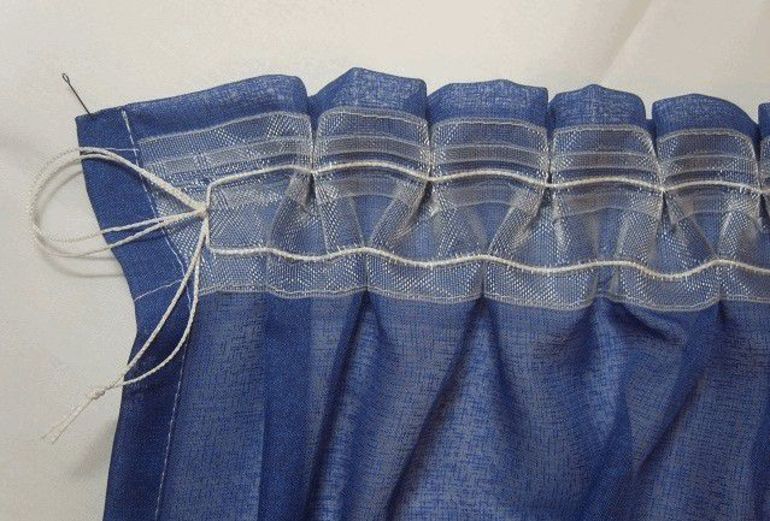
Types of tapes
The choice of tape for curtains is very large and can contain about 70 types. They have such differences:
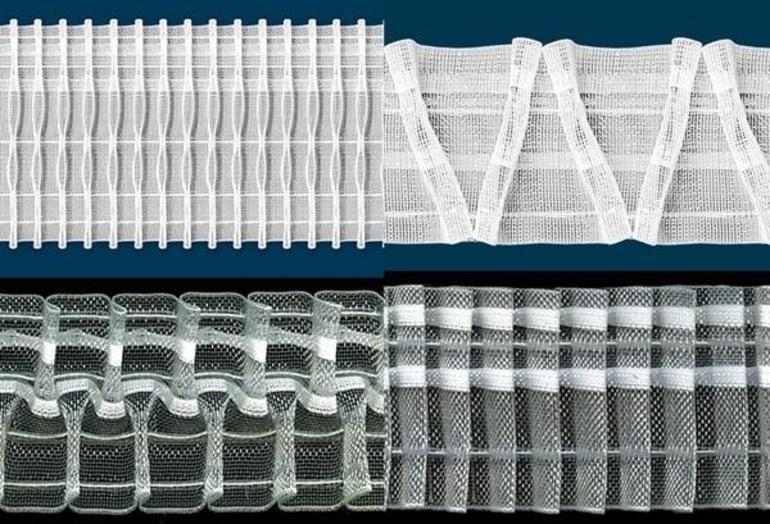
- the shape of the resulting frills;
- materials;
- methods of fastening;
- width.
The tape can be transparent or colored, depending on the curtain itself. The braid is made of such materials:
- Fishing line. They are used to create folds on organza, veil and other light tissues, since such a transparent tape is almost invisible.
- Cotton, polyester, nylon fabric. These materials are suitable for dense, heavy fabrics.
Curtain braid can be designed for a specific type of cornice. By the method of fastening, it is divided into the following types:
- Grommet.
- Corsage braid.
- With eyelets for hooks.
- For string cornices.
- For eaves pipes.
- Braid, which includes not only loops for hooks, but also Velcro for fabric.
There are various types of creases on the curtains. The appearance of the drapery on the curtains depends on their structure and construction.
Folds are:
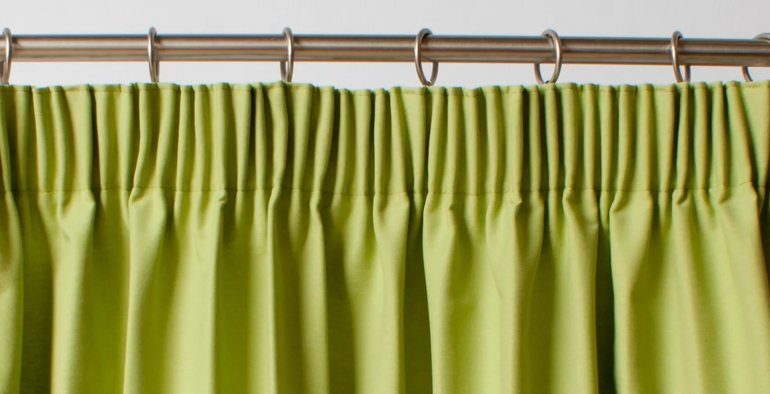
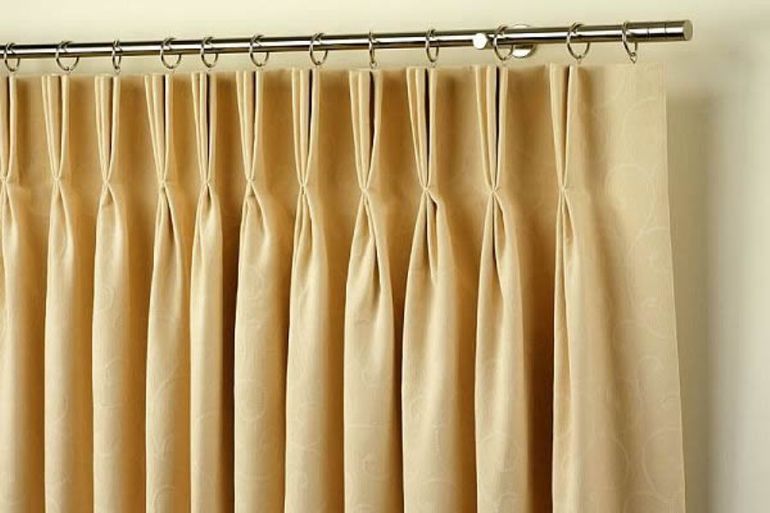
- Scallop. The most uncomplicated type of folds of lightweight tulle materials that can be achieved with a wide curtain tape. The build rate will be 1: 1.5. A string or narrow bar is best for a cornice.
- Bilateral folds. The fabric is wrapped in two different directions by uniform waves.
- Oncoming. Two folds fold towards each other. Also, this method is called “reverse bowknot”.
- Pencil folds. Traditional look, easy to use, curtains with this type of folds are easy to hang on the ledge. The indicator used is 1: 2.5. The resulting folds are narrow. Need tape 7.5 cm wide.
- Puff. They look like volumetric rhombuses. Due to the tape with four rows sewn along, you get a “butterfly”
- French fan-shaped frills. It consists of 3 folds and 2 pockets with a depth of 14 cm.
- Glasses. Created by braid with four shoelaces. They have a very voluminous shape.
- Counter assembly. It has two fabric fasteners that overlap one another. This is due to the use of tape, to which 3 rows of laces are sewn along.
- Sleeves. Build 1: 2. It is a rounded frill, which are formed due to the wide ribbon.
- Bows. Flat folds, twisted edges in different directions - this forms a bow.
- Tulip. It is obtained by picking up the bottom of the braid. To maintain shape, a filler is placed inside.
- French ruffles. Obtained as a result of screed 2-4 folds in the center, forming frills in the shape of X.
- Chicken legs are a number of folds that gather in one place below the braid and diverge to the sides and up.
- Columns. They are evenly assembled rows of neat identical folds. Their volume and quantity depends on the tightness of the laces on the braid.
Selection recommendations
The ribbon for creating frills on the curtains is a braid along which twisted ropes are sewn.This design serves as a framework for modeling folds.
It is recommended to wash the cotton braid first, as it can “sit down”. Such a technique will help to protect against the consequences after washing the curtains in the future.
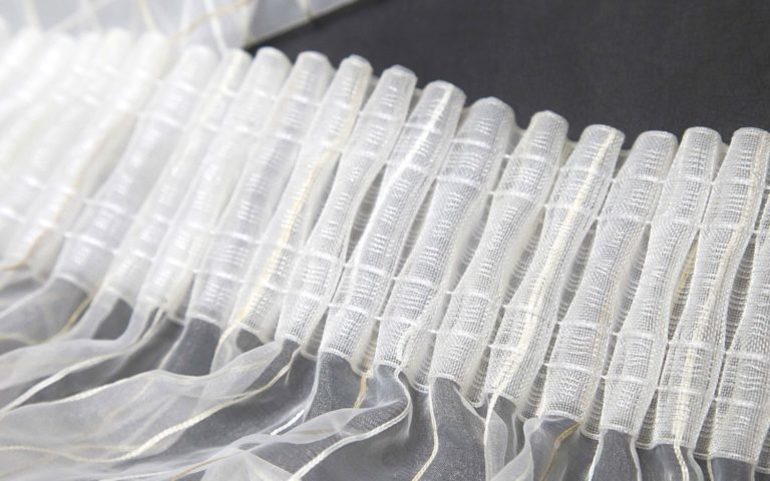
- First you need to choose the desired type of frills. Or you can take several different types of braid, pick it up and see the final view of the folds.
- On the tulle folds will not be very obvious, since the material is almost weightless, but the overall relief can still be seen.
- If the curtains have already created beautiful, unusual folds, then for tulle you can choose a tape with frills easier.
- For tulle and thin curtains, it is best to choose a transparent braid from fishing line or nylon.
- The amount of tulle depends on the type of curtain tape. Use indicators 1: 3, 1: 2, 1: 2.5, 1: 1.5. In other words: for a window of 1 m, you will need 3 m of tulle + another 10 cm.
Material Count
The length of the braid depends on how much tulle you need to drape. How to sew a ribbon on a tulle? It is necessary to use the indicators that were given above. The second number in the indicator indicates the footage of the fabric, which will be needed in order to close 1 m of the opening. For example, to buy a braid with an indicator of 1: 3 for a window opening 2.5 m wide, you will need 7.5 m of tulle and the same amount of braid.
If the curtain has already been purchased, it is important to choose a braid with a suitable indicator. It is necessary to divide the width of the fabric by the width of the opening. Thus, if there is a curtain 4 m wide, and the window opening is 2, then 4 should be divided by 2. As a result, there is an indicator 2, that is 1: 2.
Sewing a wide ribbon
On open cornices, where complex folds look best, the use of a wide ribbon is most appropriate. How to sew a wide braid on a tulle? Do-it-yourself sewing workshop:
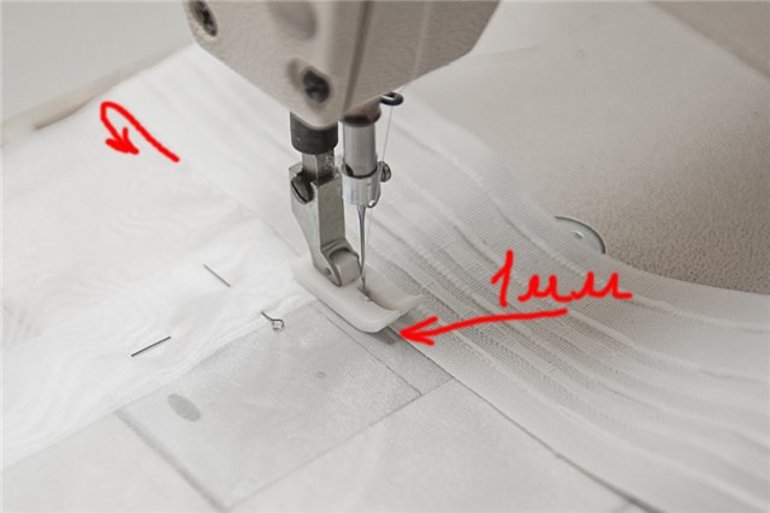
- All edges of the fabric, except the top, should be processed.
- If the edge of the fabric is disheveled, it is necessary to overlay it or make a border.
- The edge of the workpiece must be tucked and ironed carefully. The turn should be no more than 2-3 cm.
- Curtain tape is laid on the fabric inside out. The ends are tucked 1-2 cm and hemmed.
- You should step back from the top edge of 0.5-1.5 cm. The more complex the type of folds, the more you will need to step back.
- It is necessary to bind the tape to the curtain or attach it with pins. It is important that the hinges are outside, otherwise in the future, when you have to hang the curtain, problems may arise.
- Stitch the tape to the top and bottom edges. Custom tape is best used if unique folds are needed. A seam must be made near each cord.
- A knot should be tied, and on the opposite side - pulled to the desired width.
Sewing a narrow braid
Narrow braid is used in cases where intricate ruffles are not needed. This is the most advantageous option for processing the upper part of thin curtains and tulle. How to sew a narrow curtain tape to tulle? The narrow braid is sewn in the same way as the wide braid with intricate folds. Sewing instructions step by step:
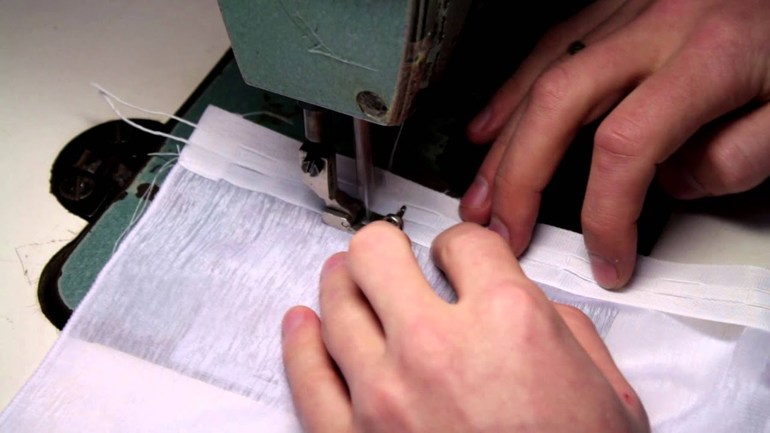
- All edges except the top must be sewn up.
- The fabric border should be wrapped 2 cm and hemmed.
- The tape is pinned to the fabric with invisibility with an allowance of 0.5 cm from the top. It should be sewn to the top and bottom.
- Unnecessary threads are removed, on each side the braid is fixed and pulled together.
It is important to ensure that the braid does not creep out of the curtains anywhere, as this does not look aesthetically pleasing.
Tulle assembly
Drapery curtains is one of the most important moments in completing work with the design of the canvas. It is very important to correctly pick up the curtain. Simple rules and tips for correctly collecting tulle on a curtain tape:
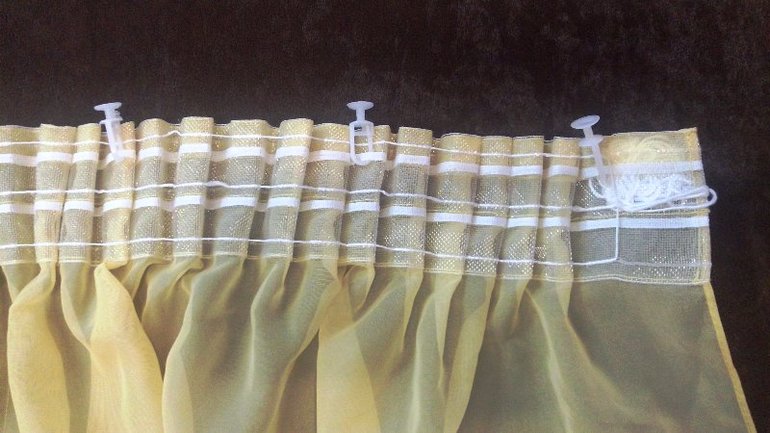
- It is recommended to do a screed with someone. If there are several cords, it is better to tighten on both sides.
- In the process of screeding, a long rope will create inconvenience, so you should attach a piece of cardboard to the edge of the rope and fold it onto the bobbin. You can also purchase a special lock in outlets.
- In the screed process, it is necessary to measure the curtain in order to achieve the desired width. A centimeter tape will come in handy.
- When it was possible to achieve the desired width of the curtain, the edges should be stitched and straightened folds. Then the curtain is hung on a structure of cornice hooks.
- There is no need to trim the remaining ropes after screed, because they may be needed the next time you have to wash and iron the curtain. This is more convenient to do when the curtain fabric is straightened and has no frills.
- It is important to stitch the tape to the fabric canvas carefully so as not to accidentally sew on the ponytails for which the curtain is pulled and a drapery is obtained.
Webbing for curtains is an easy and simple way to quickly and effectively decorate a window opening with beautifully draped fabrics. The main thing is that any housewife will be able to make such frills on her own.
- How to choose a vacuum cleaner taking into account the characteristics of the house and coatings?
- What to look for when choosing a water delivery
- How to quickly create comfort at home - tips for housewives
- How to choose the perfect TV - useful tips
- What to look for when choosing blinds
- What should be running shoes?
- What useful things can you buy in a hardware store
- Iphone 11 pro max review
- Than iPhone is better than Android smartphones



